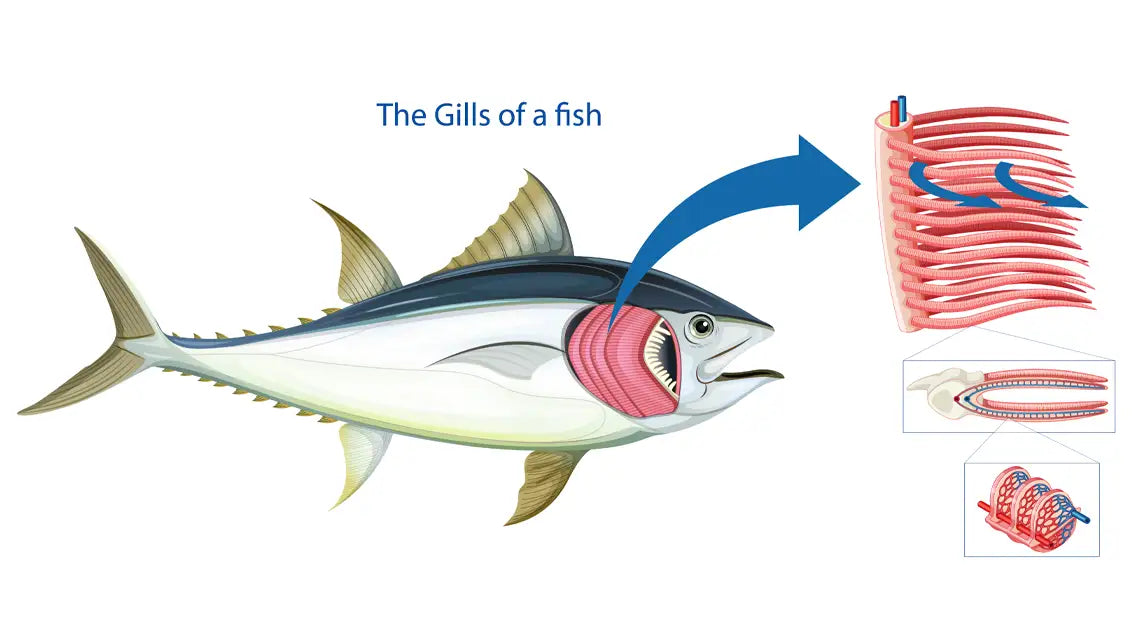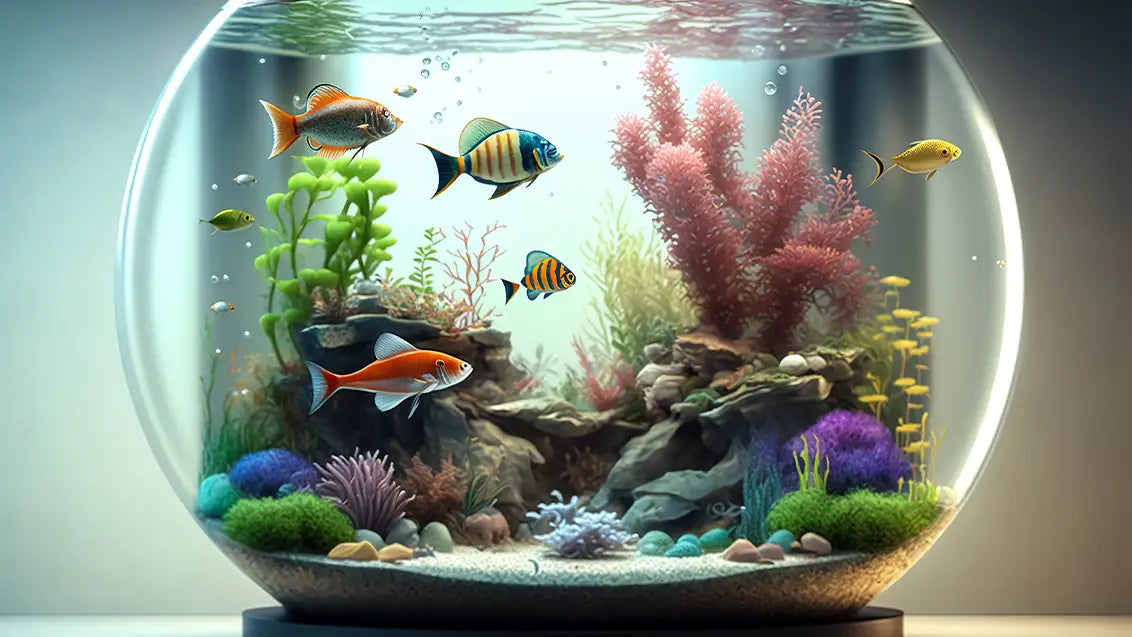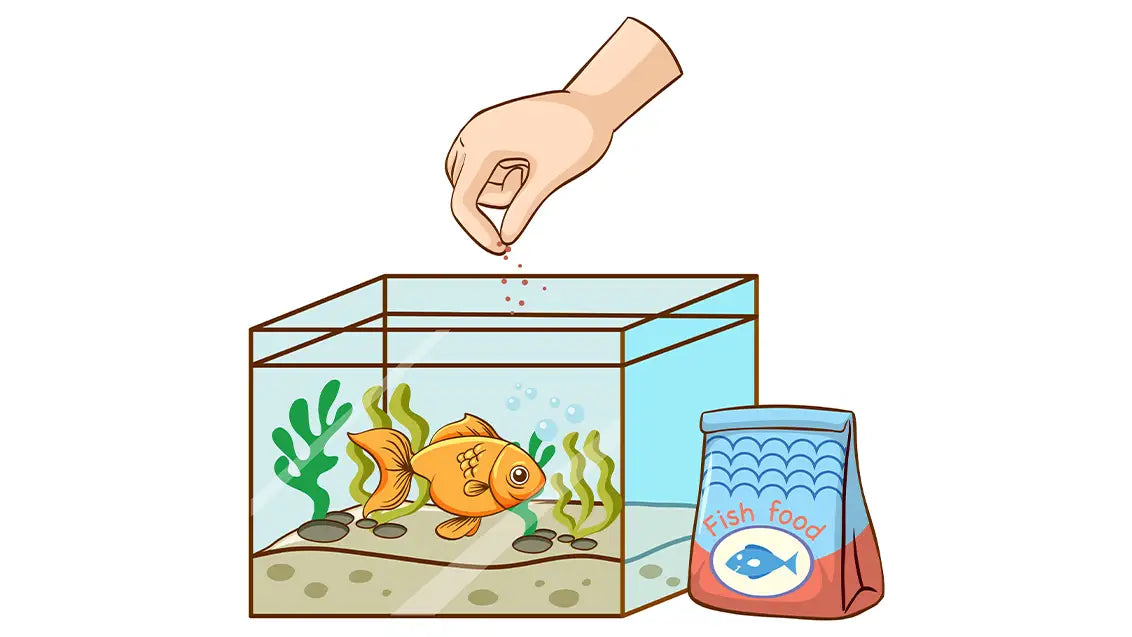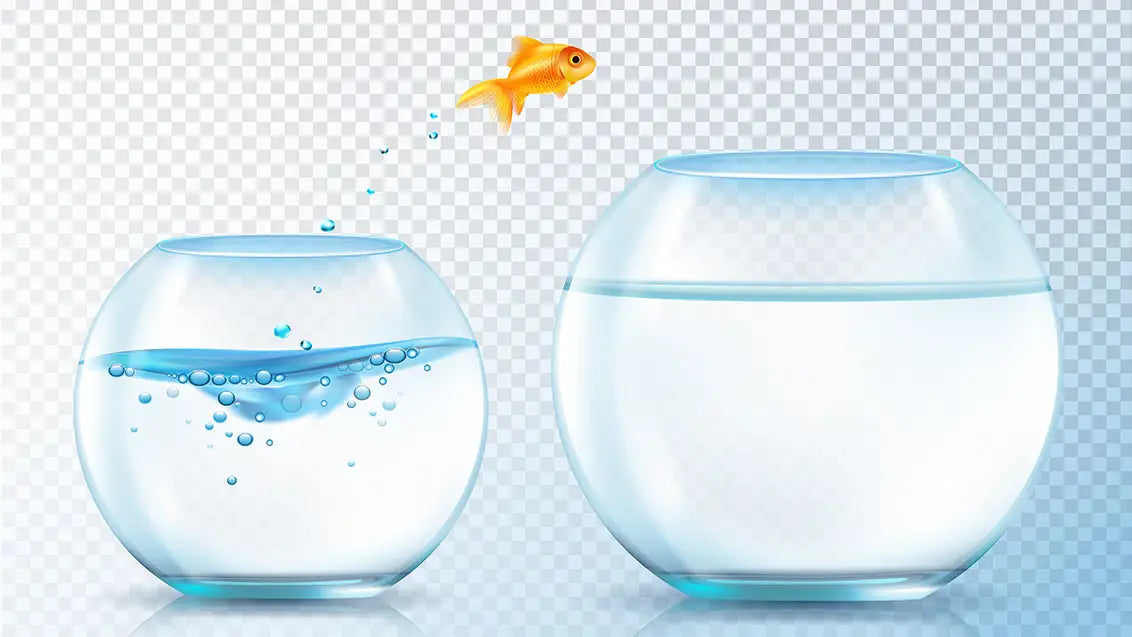
Can fish drown in water? Save a drowning fish!
Fish… the colorful aquatic creatures gliding in the shimmering waters of our aquarium and ponds. The mere movement leaves us in a trance and evokes a nostalgic feeling. Ever wondered what these tiny beings in our aquarium thinks when we touch the glass - some will crowd near the hand whereas some will back off in fear. Isn’t their behavior perplexing… but what if your fish is always lingering near the water surface in a lethargic way without eating anything. Now, this is concerning!
In this blog, we will unravel the mysteries concerning the unusual behavior of our fin-friends and learn the answer of a very intriguing question - can fish drown in water? Prepare yourself as we will dive into the watery world of our aquatic companions.
How do fish breathe in water?

Fish keeps on drawing water in its mouth which is further passed over to gills (located on either side of the fish’s head). Here the oxygen is extracted from water and diffused through the thin walls of the gills filament to the bloodstream. While the carbon dioxide is expelled from the fish body into the water.
Can fish drown in water?

Yes and no, fish can drown in water but how can a fish drown?....
A fish is an aquatic creature and it does not drown like humans as they are adapted to extract oxygen from water but they can suffocate if they are unable to get enough oxygen from the water. This can happen when there is a depletion of dissolved oxygen in water.
Some reasons why fish suffocate in water:
- Overcrowding
- Overstocking
- High water temperatures
- Pollution
- Algae blooms
- Poor water circulation
Signs of fish suffocation
- The fish may appear to gasp at the water surface.
- A drowning fish will move near the surface or where the oxygen levels are high.
- Fish can appear swimming in an erratic pattern like swimming in circles or darting back and forth.
- They will become sluggish and weak which will result in decreased activities.
- They may lose their interest in food and exhibit a reduced appetite.
- They will clamp their fins closer to their bodies, a sign of discomfort and stress.
- Their color appears to be different or darker.
- The fish can produce excess mucus on their skin or gills.
- Check for gaping mouths, flared gill covers, or rapid gill movement.
How to prevent it?

- Check Water Parameters: Poor water quality can be a cause of fish suffocation and to ensure your fish doesn’t drown it is important to test the water quality parameters. Check the temperature, pH, ammonia, nitrite, and nitrate levels using appropriate testing kits.
- Emergency Oxygenation: Increasing aeration in the water through air pumps, adding air stones or adjusting water flow. One can also agitate the water surface with bubbles, this can eradicate the suffocation symptoms.
- Administer Oxygen Supplementation: Add oxygenating tablets or solutions to the water to boost oxygen as this can provide relief to the suffocating fish.
- Isolate the Affected Fish: In order to provide relief to the suffocating fish, you can move the particular fish to a separate tank with clean and oxygenated water to make the recovery process efficient.
- Monitor and Observe: In the end, it is necessary to monitor and observe the condition of the fish continuously. Check any improvements or worsening symptoms also.
What Happens When Fish "Drown" or Suffocate in Water?
1. Behavioral Changes:
One can observe changes in the behavior of the fish, look for the signs of suffocation as the behavior will serve as a sign of warning.
2. Respiratory Distress:
The insufficient oxygen leads to respiratory distress in fish that can appear in the form of rapid, labored breathing in fish or they may be seen gasping at the water surface.
3. Decreased Oxygen Saturation:
If the concentration of oxygen is decreased more and nothing is done to relieve the fish of the respiratory distress then this can lead to hypoxia in fish.
4. Suffocation and Death:
In the severe cases of hypoxia, fish can suffocate and die within mere minutes whereas in less extreme situations death may occur over a longer period.
How to Prevent Fish Suffocation in Aquariums?
1. Proper Tank Size and Stocking Density:

Before getting a fish or an aquarium, it is important to do your own research on the social behavior and space requirements of the particular fish. Select a proper tank that can accommodate the fish and provide ample space for swimming. Also make sure you don’t overcrowd the tank as this results in depletion of oxygen levels.
2. Adequate Filtration and Circulation:
Opting for a filtration system will help you keep the tank clean while creating a safe haven for the fish to live in. One can choose the filtration process as it has its types, mechanical, biological and chemical. Whatever method you choose, make sure to clean or replace the filters often to keep the water clean in the tank as this will prevent the fish from drowning.
3. Regular Water Changes:

Regularly changing water in the water tank is essential as it helps in stopping incidents of drown fish. Adding it in your daily schedule and making it a routine will ensure that the aquarium remains clean and the water quality is maintained. You can use gravel vacuum to remove debris while changing water. Also add dechlorinator as this will neutralize harmful chlorine.
4. Monitoring Water Parameters:
Get a test kit with which you can check whether the water in the aquarium meets the parameters or not. Maintain a record of the tests to ensure that the issues do not escalate and cause a threat to the fish in the tank. Also, try to keep the water as per the requirements of your fish species and maintain necessary conditions.
5. Aquatic Plants:

Including a wide range of aquatic plants will help in enhancing the oxygen production in the tank that will promote the overall water quality. Choose the plants that are more compatible with the lighting and water parameters of your aquarium. Simply adding these plants will not be enough, maintaining these plats on a regular basis is also important, remember to prune them.
6. Aeration in the tank:
Keeping adequate aeration devices can help elevate the issue of drowning a fish by promoting oxygen exchange at the water surface. Remember, while selecting the devices make sure you consider the surface area, water depth and the oxygen requirements of the fish. You can also consider adding oxygenation methods such as surface skimmers or sponge filters in areas with poor water circulation.
7. Avoid Overfeeding:

Create a feeding schedule as this step will help in properly managing the feeding habits and dietary needs of the fish. This will ensure that your fish does not overfeed and the waste is not accumulated in the tank. Use good quality fish food and monitor the behavior of the fish regularly. Always be mindful of appetite and growth rates.
8. Temperature Control:
Maintaining the temperature in the water tank is essential as the oxygen level varies in warm and cold water. Use a thermometer to keep the temperature stable and avoid placing the aquarium near sources of heat or cold as it can cause fluctuations in temperature. Monitor the temperature and make optimal changes for the fish’s health.
9. Quarantine New Additions:

Before introducing a new fish, plant or creature in the tank, it is better to keep them in a separate quarantine tank for observation. Check for signs of disease, stress, or aggression and treat any issues. This step will make sure that the environment of the tank will remain harmonious and the health of the fish will not be affected.
10. Minimize Stress Factors:
Create a tranquil and secure environment for your fish by providing adequate hiding places, shelter, and visual barriers to reduce stress and aggression. Minimize disturbances during routine maintenance activities by handling fish gently, avoiding sudden movements, and using equipment that minimizes noise and vibration.
Summing - Up!
This would have been enough to answer “Could fish drown?” This concept of a drowning fish is not mere a paradox but is a reminder of the balance life has between the waves. While we know fish are aquatic creatures swirling in the depths of the aquatic environment, who knew that even fish can face a peril like this.
So, next time if you are gazing at the beautiful lightened aquarium or the open pond, remember and reflect upon the journey of a drowning fish. For there is so much we have in common with it - struggle for breath in dire circumstances, flailing against the tides of traumas and seeking respite in the depths. Saving a drowning is not just an act of compassion towards a fellow inhabitant of our shared world, it is a poignant reminder of our own struggles, vulnerabilities, and the profound impact of extending a helping hand to those in need.
Check out Pets by Numbers if you want to portray these creatures in the form of custom fish painting by numbers!

